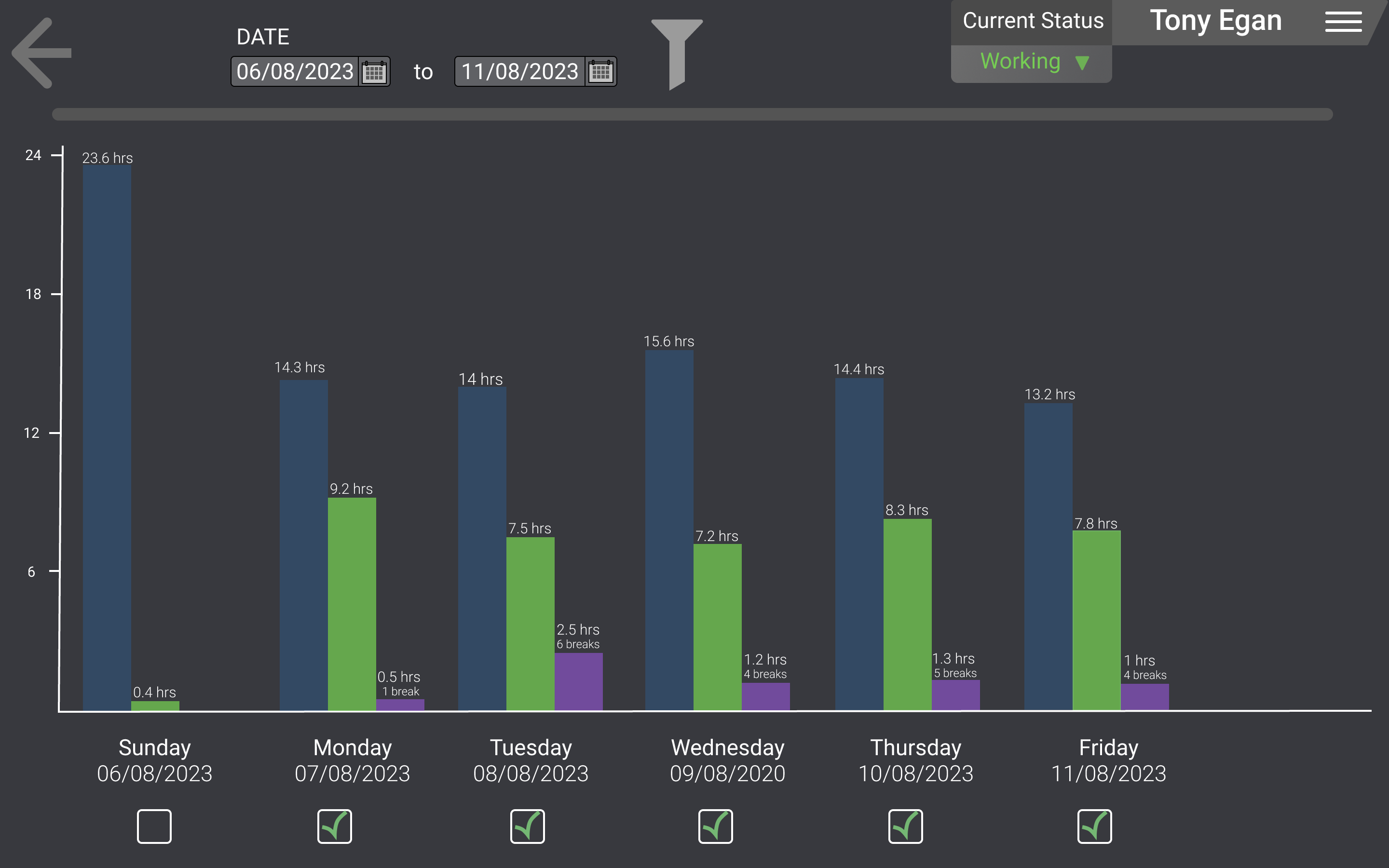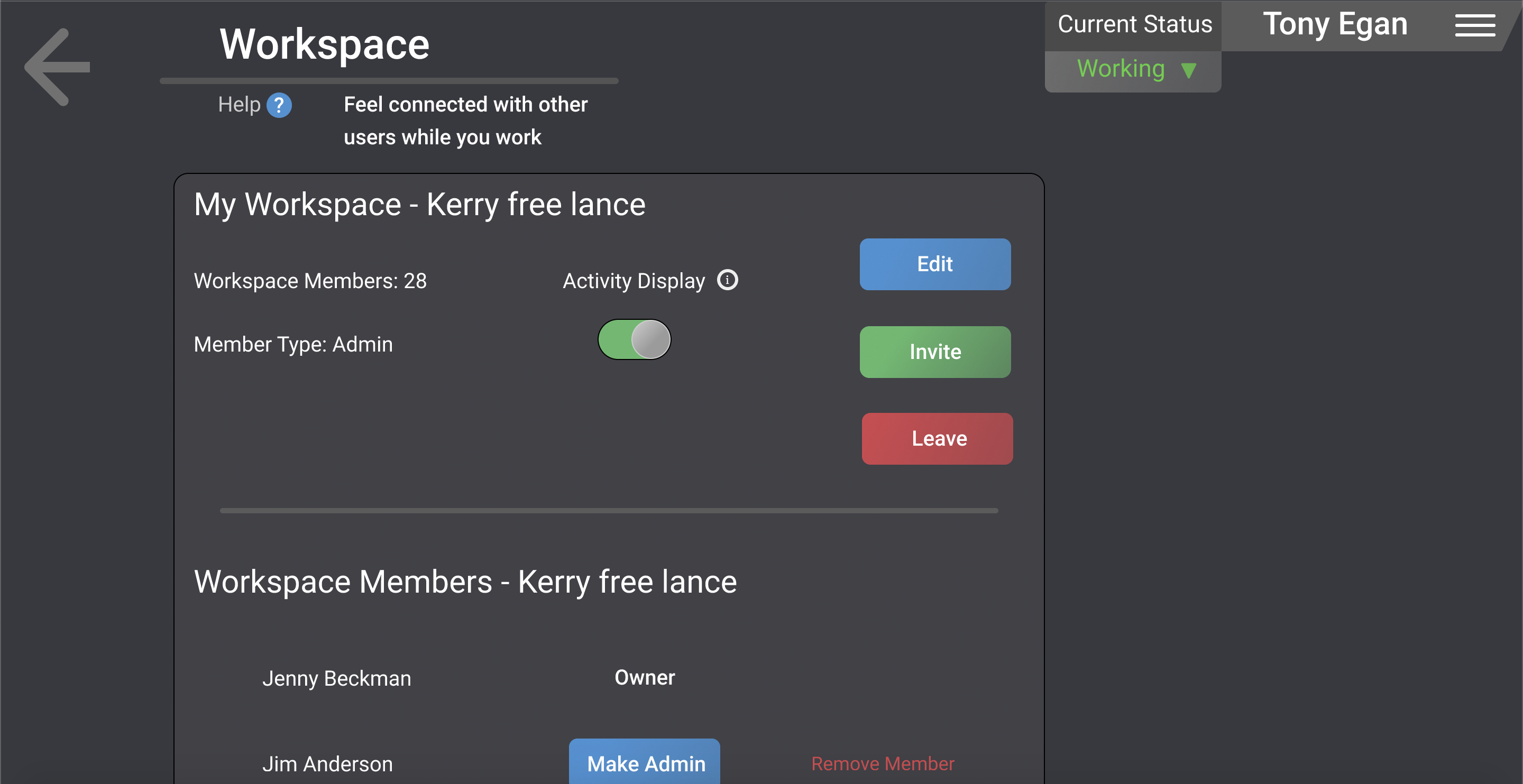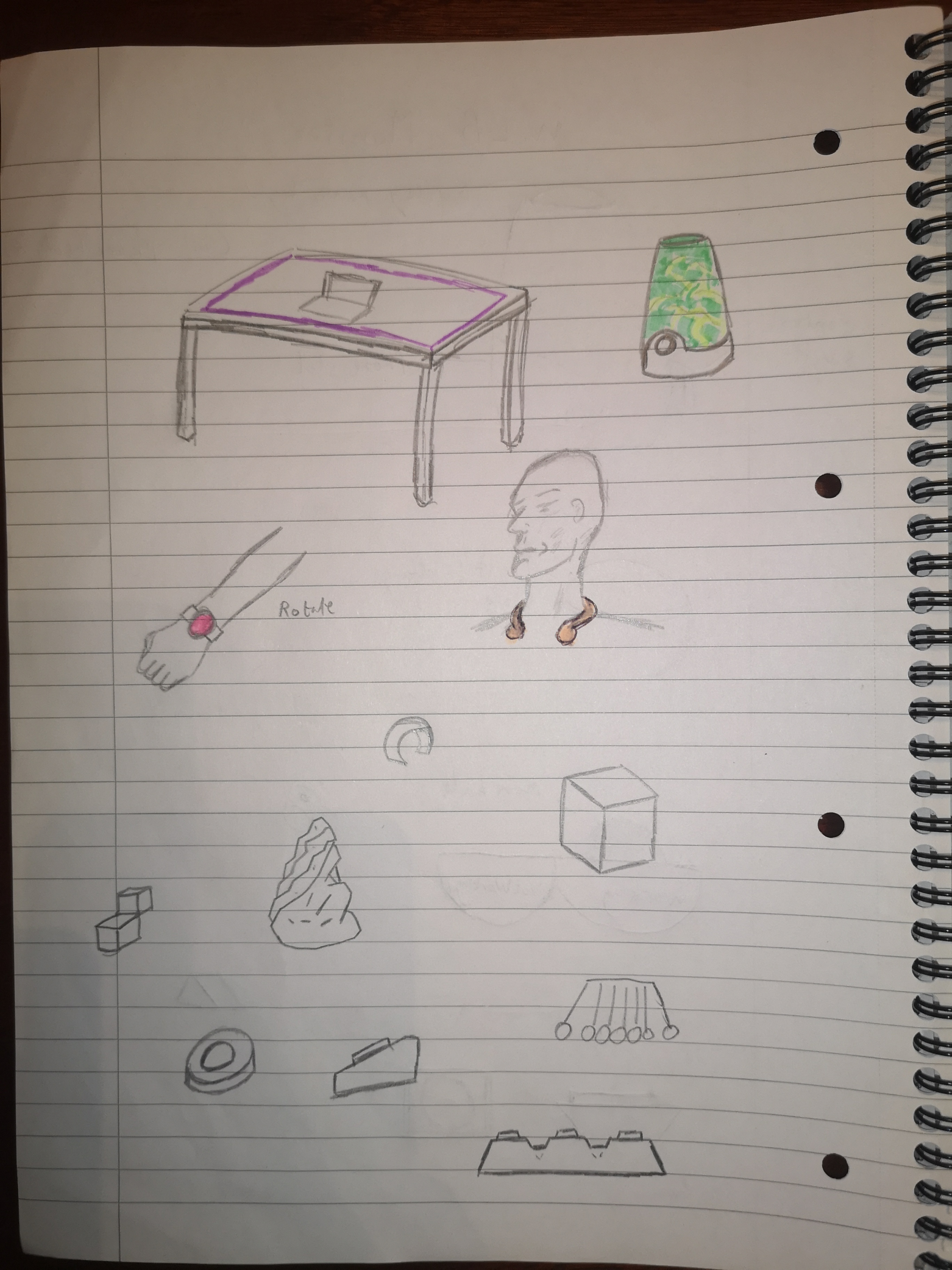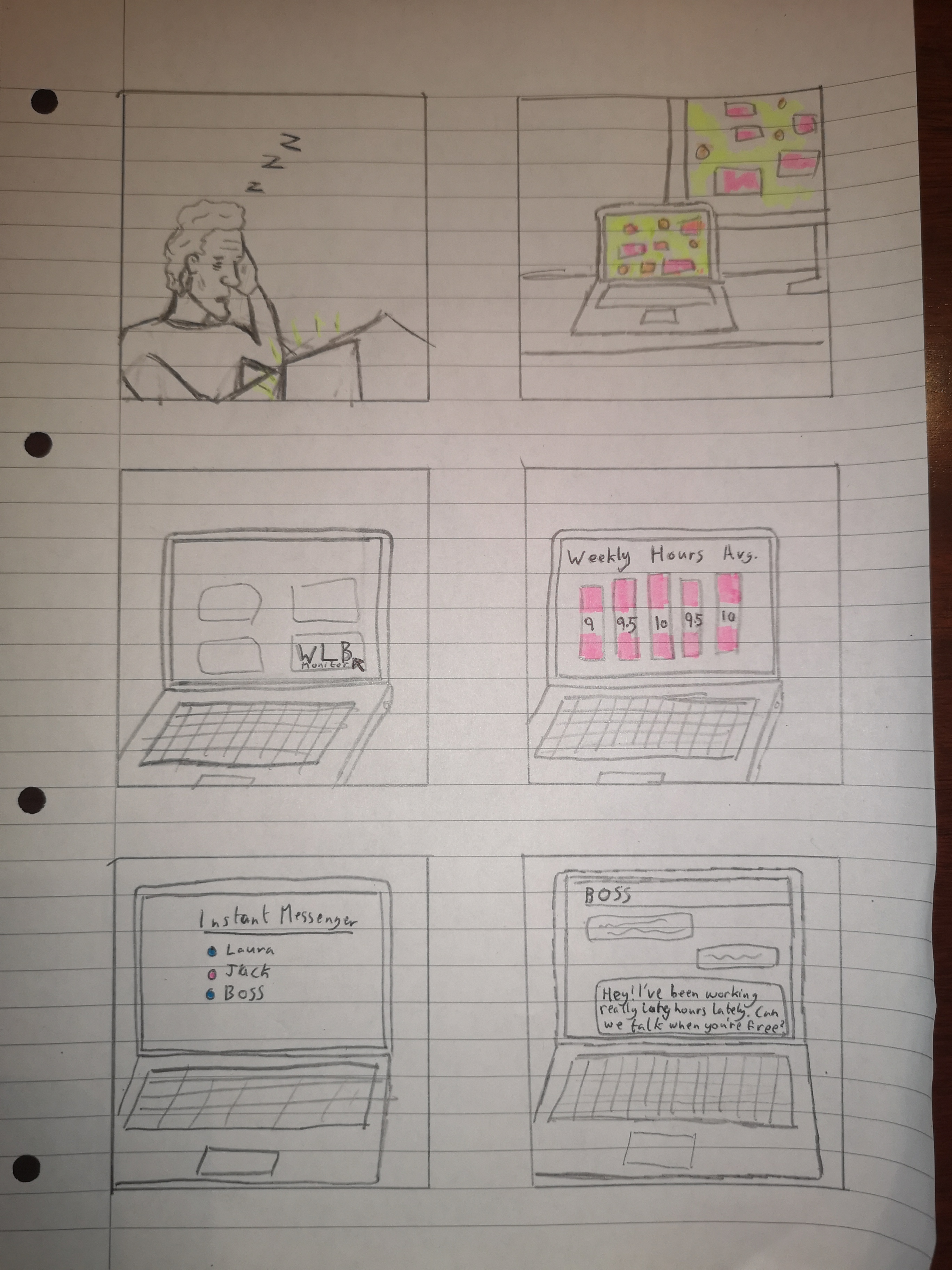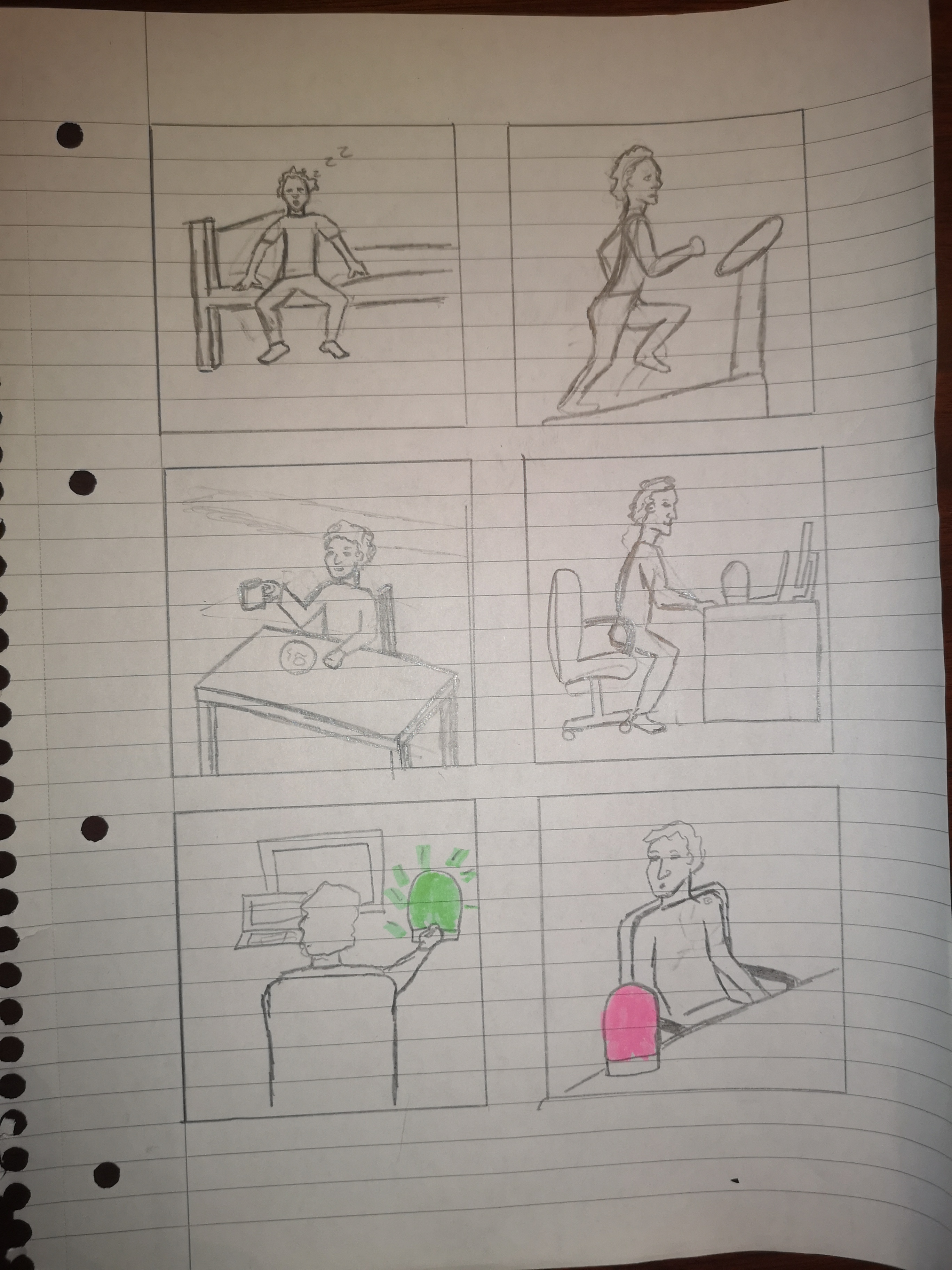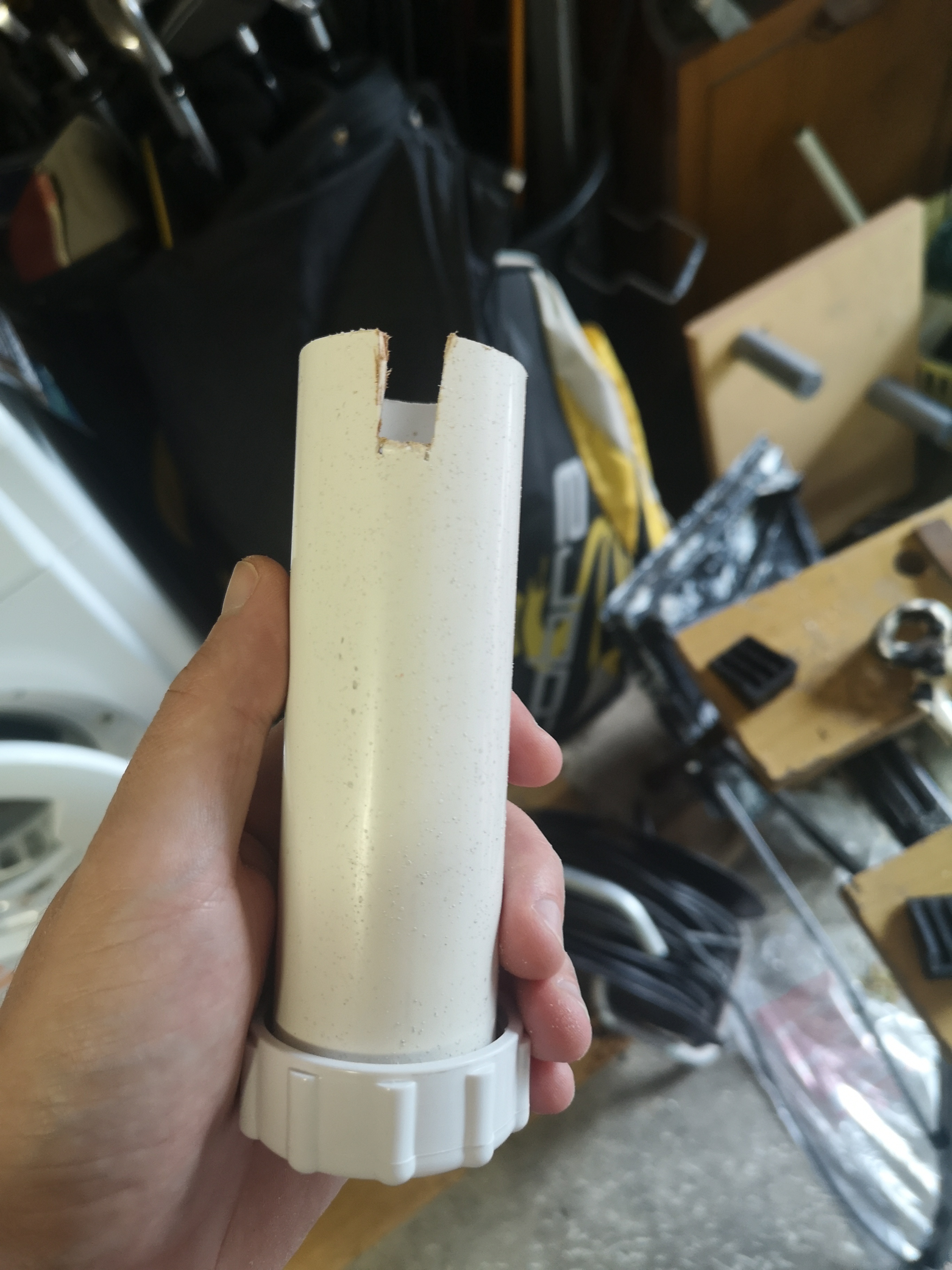Background
Brief
This project was my dissertation for my Masters in Interaction and experience design.
Topic
Working from home
Duration
8 months
Design Challenge: Healthy work life balance
Creating greater distinction between work time and non-work time while working from home. Sub-challenge: Addressing the sense of isolation and lack of connection with colleagues.
Project Summary
In my research & design, I wanted to explore the current experience of working from home. Many had been thrust into working from home with no preparation as a result of the Covid 19 pandemic and although many had proven to be able to work effectively, I believed there was potential for enhancing the experience. I wanted to understand the challenges and limitations that people were facing as well as the positive aspects. My goal was to design, implement and test a system that aimed to alleviate problems, improve or potentially broaden the experience in ways that might not have been possible in an office environment. The starting research/design problem statement was: How can the working from home experience be improved by human centred design?
In response to my research which consisted of a Literature Review and an Empirical evaluation where I conducted online observation and 7 interviews, I carried out an Ideation and Design phase which led to the development of what I named a 'Work Life Balance Monitor'. I developed a low fidelity prototype which was then redesigned in response to user testing sessions. I then built a final higher fidelity prototype. I then presented this project and demoed my solution to Thesis supervisors, second readers and fellow students.
Tools & Techniques
Research
Literature review • User interviews • Online Observation
Design Methods
Brainstorming • Mind mapping • Dark side • Storyboarding • Object modeling • Flow Diagrams • Sketching • Prototyping • User Testing
Build
Arduino • Figma • Wood craft • Soldering • Electronics
Process

Research methods
Literature Review
This project began by reviewing academic literature, public surveys and online articles related to working from home. I covered material from before and after the Covid-19 pandemic. I learned about the different methods of working from home and researched some of the challenges that had been investigated. I also researched Calm technology as this was an area of HCI that had shown promise in working environments.
Online Observation
One of the advantages of the time at which I carried out this project was that it was occurring during one of the largest scale remote working experiences. This meant that there was constantly articles and online posts about working experiences. This often occurred on websites like Reddit where users were commenting about their experiences. I looked for both positive and negative commentary in an effort to find a range of opinions and experiences.
Interviews
I carried out 7 interviews over MS teams. I sought out candidates that were between the ages of 25 and 40 whose work would have previously occurred in a traditional office environment and who didn't have children. I aimed to interview a mix of male and female participants. I started interviews in a broad manner to hear candidates general opinions and experience of working from home. I then asked questions about some of the topics that I'd read about in the literature review in a non-leading manner.
What I discovered: Research insights
The Literature review identified three main themes in this area of life which included Flexibility, Communication and working hours. The empirical evaluation reaffirmed and expanded upon these themes.
Communication
Isolation and the lack of colleague interaction was shared with almost everyone that I interviewed however many spoke about this at a time when they were working in a pandemic, in some cases during lockdowns when all forms of interaction were more limited than ever. Natural collaboration became more challenging if not non-existent while working from home. Communication was being designated with purpose. There was also expression of concern for worker exclusion as a result of increased flexibility with mixed workforce being onsite and offsite, with those working from home missing out on conversations that happen in the office. ICT’s were not yet able to replace social interaction successfully. The lack of colleague interaction was seen to be positive in that it allowed for less distraction and greater ability to focus on work tasks, but many interviewees and observants miss the sporadic conversations, interactions with non-team colleagues and the after work social activities. Some interviewee’s expressed a sense of awkwardness and discomfort at the attempts made to have social calls over ICT’s.
Working hours
Long working hours was a consistent issue for people working from home and seemed to relate to work culture, proximity to work technology and a person’s willingness and efforts to maintain boundaries between work and personal life. Many commentators and interviewees mentioned the office as a physical disengagement between work and home which they accounted for not working lengthened hours. As well as being a physical disengagement in terms of work hours, some participants and observants also looked at the more distinct end of the day or change of environment experienced while working in an office as a profound mental disengagement with work. While working from home there was often a less clear start and end of day with some interviewees feeling pressured into starting work earlier than they would in the office and others finishing later. Working longer hours was found to be an issue that organizations were proactively aiming to resolve and seeking out tools that could help to improve. Interviewee’s also talked about working for prolonged periods without moving around and the lack of commute contributing to this lack of activity. They expressed a desire to be more active and get away from their desk more regularly but could often work long stints without realizing. Working long hours was also found to be an essential factor for interviewees when considering roles with a desire for work life balance. Some interviewees were experiencing a period where they were regularly working longer hours that they believed would be temporary despite no indication of that being the case. There appeared to be a lack of clarity between work time and personal time when working from home. Some interviewees and observants were more stringent about their working time in order to avoid this being an issue. There was also pressure from deadline focused working models that causes employees to work longer.
Flexibility
Flexibility was seen to be one of the major benefits of working from home. Interviewees and observants talked about being able to carry out house keeping activities with ease. Along with this the convenience of working from home by not having to commute, having less need to prepare for the next day and the general home comforts could be seen as part of why some are adamant about continuing to work from home. Flexibility also posed concern for collaboration if not managed. The opportunity for flexibility could also lead to working longer hours as interviewees and observants felt more accessible with blurred lines between work and personal life and could find themselves being drawn into work activities outside of what would have been their office schedule. There is mixed commentary around distractions while WFH and this varies based on the individual’s home arrangement.
What I developed: Work Life Balance Monitor
The work life balance monitor is a device that aims to create greater distinction between work time and non-work time while working from home. The desk based ambient component adheres to the principles of calm technology and aims to limit distraction and blend in with the user’s surroundings. The device tracks the amount of time users spend working and taking breaks throughout the working day. Users can reflect on this data to identify trends in their working pattern and work towards creating better work life balance. The system uses ambient light to communicate to the user when they should take breaks or when they've met their hourly work goal for the day. It also uses colour patterns to create a sense of connection between workers that are part of a shared workspace. The colour pattern is influenced by the number of users from a common workspace that are online at the same time.













